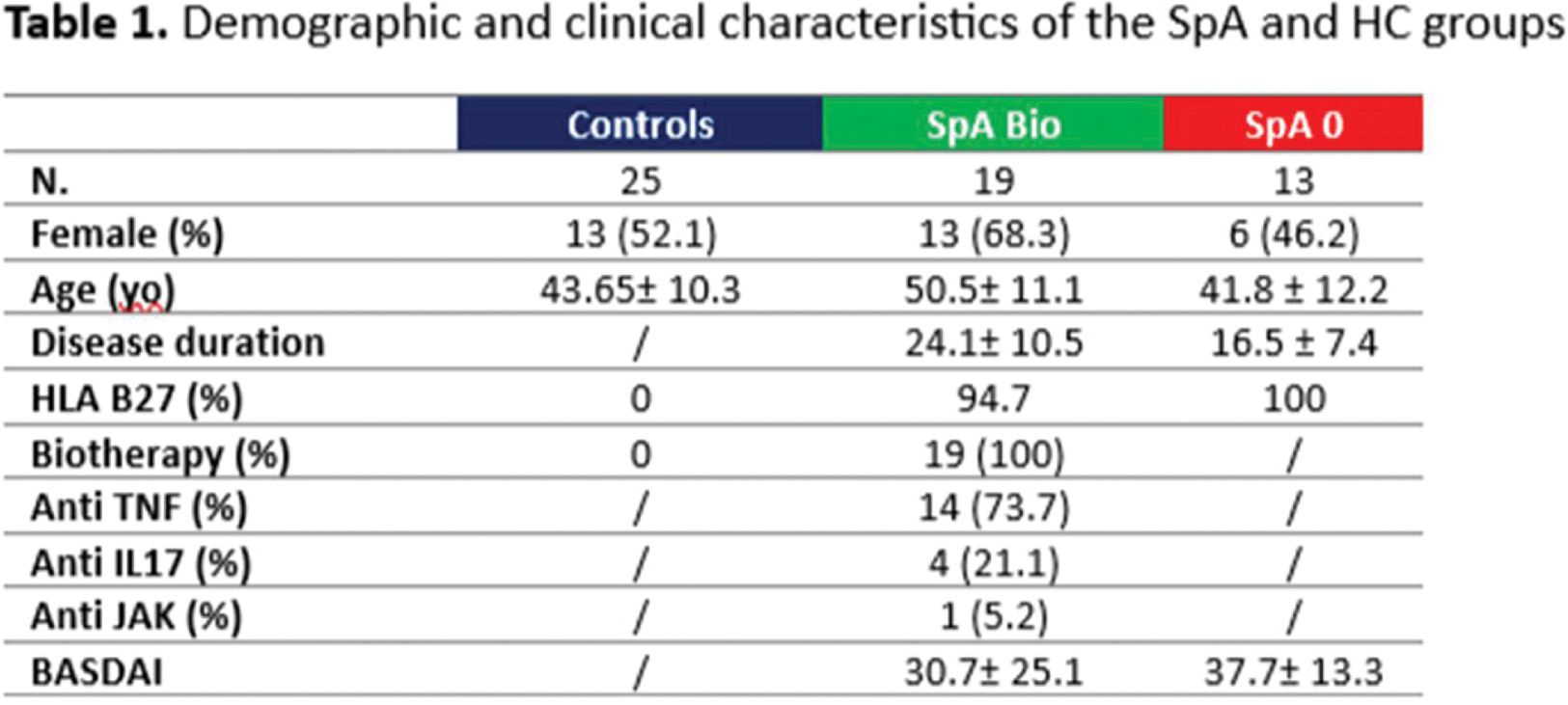

Background: Spondyloarthritis (SpA) is a chronic rheumatic disease characterized by axial and peripheral joint inflammation and extra-articular manifestations. The role of Th17 cells in disease is considered as one of the major immunological mechanisms of SpA development. There is an important genetic predisposition underlying SpA susceptibility, particularly due to the HLA-B27. A salient overexpression of the Deltex 1 (Dtx1) gene was previously shown through RNAseq transcriptomic analysis in naïve CD4+ T cells from HLA-B27 transgenic rats (B27 rats), both in premorbid and in rats with established SpA, as compared to nontransgenic (NTG) control rats. Interestingly, this gene is implicated in the differentiation of naïve CD4+ T cells into Th17 cells. To our knowledge, there are currently no studies addressing the role of this gene in SpA.
Objectives: Our aims were to confirm by qRT-PCR the expression of DTX1 in another cohort of B27 rats and to analyse whether those findings were transposable to SpA patients, in relation with disease activity and treatment.
Methods: The animal cohort included 3–4-month-old B27 rats (n=10) with established disease and age-matched NTG rats (n=10). Naïve CD4+ T-cell population (CD4+CD25-CD62L+) was isolated by flow cytometry from mesenteric lymph nodes cells. The human cohort included 32 axial SpA patients fulfilling the ASAS classification criteria (8) and 25 healthy controls (HC) matched for age and sex recruited in the Department of Rheumatology of Ambroise Paré Hospital (Table 1). The SpA group was further divided according to the use of targeted DMARD therapy (19 patients; “SpA Bio”) or not (13 patients; “SpA 0”). Disease activity was assessed with the BASDAI. Peripheral blood mononuclear cells (PBMC) were collected by Ficoll gradient density. Using appropriate combinations of antibodies, naïve CD4+ T cells (CD4+CD45RA+CD45RO-CCR7+) were sorted by flow cytometry. RNA extraction and cDNA synthesis were performed on rat or human naïve CD4+ T cell, followed by qRT-PCR. GADPH and ACTIN were used as reference genes. Unpaired parametric T – test and one way ANOVA were used to analyse the dataset. Study procedures using rats were approved by the Institutional Animal Experimentation Ethical Committee and written informed consent was obtained from healthy controls and SpA patients, before study.
Results: We confirmed a significant overexpression of Dtx1 in resting naïve CD4+ T cells from B27 as compared to NTG rats (p< 0.0001) (Figure 1). With regard to the human cohort, almost all SpA patients were HLA-B27 positive (95.8%), while no such case was recorded in the HC group. (Table 1). In the targeted DMARD-treated SpA group, the treatment consisted of anti-TNF (73.7%), anti IL-17 (21.7%) or JAK inhibitor (5.2%). Similar to B27 rats, SpA patients expressed higher levels of DTX1 in their naïve CD4+ T cells than HC, that was close to statistical significance (p = 0.051). (Figure 2). Strikingly, patients without targeted DMARD had a higher expression of DTX1, than those treated with targeted DMARD, in whom DTX1 mRNA levels were similar to the HC group. Thus, there was a significant difference in DTX1 expression only in the “SpA 0” patients, as compared to the HC. (Figure 3; p = 0.03). However, the level of BASDAI was not correlated with DTX1 gene expression, suggesting that its relationship with targeted therapy depended rather on the treatment by itself than on its effect on disease activity.
Conclusion: The DTX1 gene was similarly overexpressed in the naïve CD4+ T cells from B27 rats and SpA patients. However, such overexpression was only observed in patients that did not receive targeted DMARD. Further analysis will be needed to understand the role of DTX1 expression in SpA pathogenesis.


REFERENCES: NIL.
Acknowledgements: NIL.
Disclosure of Interests: None declared.